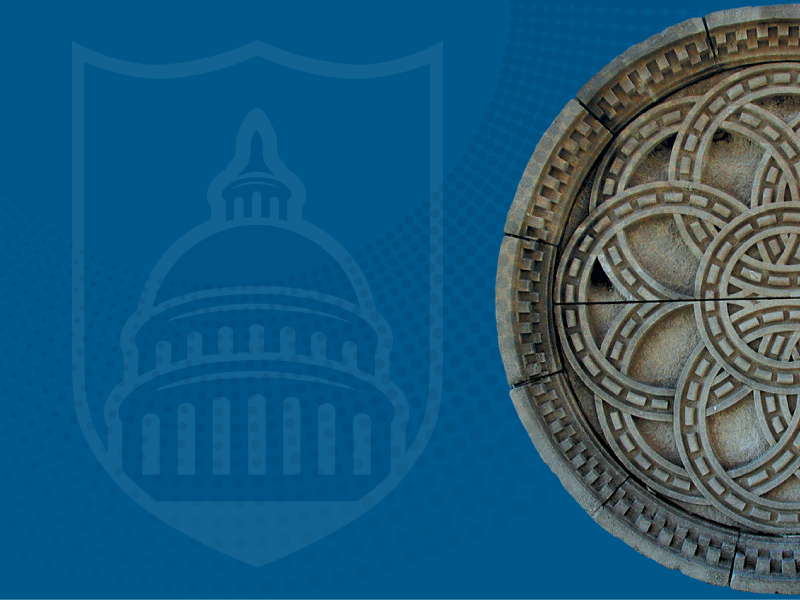CPPR Health Policy Working Group Seminar: Tatiane Santos
"Oregon’s Financial Assistance Policy: Impact on County-Level Medical Debt in Collections and Hospital Charity Care Spending"
Assistant Professor in the Health Policy and Management Department at the Tulane University Celia Scott Weatherhead School of Public Health and Tropical Medicine.
More Information
Join The Murphy Institute Health Policy Working Group next Wednesday, April 23rd, from 12:00 PM to 1:00 PM in LBC 210 for an insightful seminar presented by Dr. Tatiane Santos.
Tatiane Santos, PhD, MPH, Assistant Professor in the Health Policy and Management Department at the Tulane University Celia Scott Weatherhead School of Public Health and Tropical Medicine, will be presenting her working paper, "Oregon’s Financial Assistance Policy: Impact on County-Level Medical Debt in Collections and Hospital Charity Care Spending."
Dr. Santos' research focuses broadly on the critical roles of state and local public health departments, hospitals, and primary care providers in contributing to population health and equity. Her work often examines the impact of policy reforms on these key actors and their interactions.
This seminar is a product of the Center for Public Policy Research's (CPPR) health policy program, which leverages the expertise of The Murphy Institute's Health Policy Working Group. Organized by Tulane professors Mary Olson and Kevin Callison, the working group fosters interdisciplinary research and collaboration among professionals from Tulane’s Uptown and Downtown campuses to address pressing healthcare policy issues.
About the Health Policy Working Group Organizers:
- Mary Olson is an Associate Professor of Economics at Tulane University and the leader of the Health Policy Working Group. Her research interests include health economics, the political economy of health policy, regulation, and the study of bureaucracy, with expertise in FDA regulation.
- Kevin Callison, PhD is an Assistant Professor in the Department of Health Policy and Management at Tulane University School of Public Health and Tropical Medicine, with appointments in the Department of Economics and The Murphy Institute. His research focuses on health economics, labor economics, and applied econometrics, with a particular interest in evaluating policies aimed at improving population health.
Join us for this important discussion on Wednesday, April 23rd, from 12:00 PM to 1:00 PM in LBC 210. Lunch will be provided.
ABSTRACT:
Medical debt is an economic and public health crisis affecting the uninsured population and a growing share of insured individuals with high-deductible insurance plans. By the end of 2021, approximately 20 million people owed a total of $220 billion in medical debt. Hospital bills for single acute events, such as a visit to the emergency department, represent the vast majority of medical debt, which in turn is a leading cause of bankruptcy filings. Approximately 41% of adults currently have medical debt with about 72% of this debt attributed to acute care including a single hospital stay.
To address the medical debt crisis, states have implemented various medical debt protection policies. Upstream medical debt protection laws are designed to prevent individuals from incurring medical debt in the first place, such as financial assistance policies (FAP), which are considered to hold great potential in alleviating medical debt. Starting in 2019, Oregon expanded its medical debt protections and FAP which prohibit hospitals from collecting patients’ medical debt or referring unpaid medical bills to collections before determining patients’ eligibility for FA. Under Oregon’s FAP, individuals with household income below 200% of FPL qualify for 100% coverage of their out-of-pocket costs, and individuals falling between 200-300%, 300-350%, and 350-400% FPL qualify for a 75%, 50%, and 25% reduction of their out-of-pocket costs, respectively.
We examined the impact of Oregon’s FAP using two-way fixed effects difference-in-differences analyses and event studies to evaluate trends before and after policy implementation using data from 2015-2022. We examined treatment heterogeneity by metropolitan status. The primary outcomes included share of the county population with medical debt in collections, and hospital charity care and bad debt expenditures (as a share of operating expenses).
The study sample was limited to states that expanded Medicaid in 2014 and had not implemented a FAP by 2022. Using linear regression models, we controlled for time-varying county (or hospital) characteristics, and county (or hospital) and year fixed effects. County- and hospital-level models controlled for median income, population size, Herfindahl Hirschman index (HHI), and the percent of the population that was uninsured, unemployed, Hispanic, Black, high school graduate, and non-elderly with a disability. Additionally, hospital-level models controlled for bed size, teaching and critical access status. Standard errors were clustered on state.
Principal Findings: We found that Oregon’s FAP was associated with a decrease in the share of the county population with medical debt in collections (pooled: -2.3%, p<0.05; metro: -2.4%, p<0.01; non-metro: -2.0%, p<0.05). Oregon hospital incurred larger bad debt expenditures after the policy was implemented (0.008, p<0.05), and spent more on charity care in 2019 (0.005, p<0.01) and 2020 (0.003, p<0.01). Findings were similar for hospitals located in metro and non-metro areas. Interestingly, Oregon hospitals spent less on charity care in 2022 (-0.003, p<0.01).
Conclusions: Our findings suggest that Oregon’s FAP was effective in reducing the share of the population with medical debt in collections and increasing hospital uncompensated care. Several recent developments will likely cause the medical debt crisis to worsen including potential cuts to the Medicaid program. Additionally, the current administration has ordered the Consumer Financial Protection Bureau to stop its activities, including promulgating a rule that would remove $49 billion in medical debt from the credit reports of millions of Americans. Targeted medical debt protections, such as Oregon’s, may expand patient FA, curb extraordinary collection actions by hospitals, and reduce the burden of medical debt.

